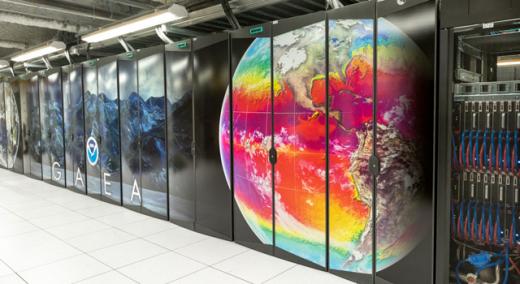(Oak Ridge National Laboratory: Oak Ridge, TN) -- In partnership with the National Oceanic and Atmospheric Administration (NOAA), Oak Ridge National Laboratory (ORNL) is launching a supercomputer dedicated to climate science research. The new system is the fifth supercomputer to be installed and run by the National Climate-Computing Research Center (NCRC) at ORNL.
|
ADVERTISEMENT |
The NCRC was established in 2009 as part of a strategic partnership between NOAA and the U.S. Department of Energy, and is responsible for procuring, installing, testing, and operating several supercomputers dedicated to climate modeling and simulations. The partnership’s goal is to increase NOAA’s climate modeling capabilities to further critical climate research. To that end, the NCRC has installed a series of increasingly powerful computers since 2010, each formally named “Gaea.” The latest system, also referred to as C5, is an HPE Cray machine with more than 10 petaflops (or 10 million billion calculations per second) of peak theoretical performance—almost double the power of the two previous systems combined.
…

Add new comment